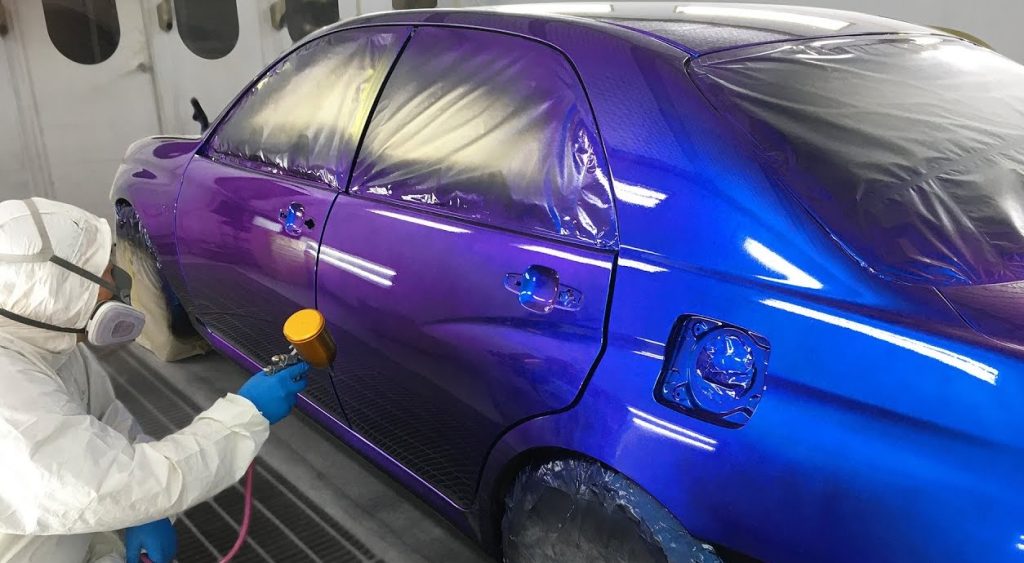Duct tape has long been a go-to solution for quick fixes and temporary repairs. Its versatility and adhesive strength make it a popular choice in various scenarios, from mending household items to patching up unexpected car issues. However, the burning question among car enthusiasts remains: Will duct tape ruin car paint? Let’s embark on a comprehensive exploration of this concern, breaking down the intricacies of duct tape, understanding the vulnerabilities of car paint, and providing practical tips to safeguard your prized possession.
Introduction
In the vast realm of automotive care, where ingenuity often meets necessity, duct tape emerges as a seemingly omnipotent tool. Its applications range from securing loose parts to taming unruly wires, and even patching up unexpected car troubles. Yet, the apprehension lingers – can this adhesive marvel pose a threat to your car’s meticulously applied paint job?
Understanding the Components
1. Duct Tape Composition
To comprehend the potential impact of duct tape on car paint, we must first dissect its composition. Typically consisting of a polyethylene backing and a rubber-based adhesive, duct tape is engineered for durability and versatility. However, not all duct tapes are created equal. Variations in adhesive strength and backing materials can influence their compatibility with automotive paint.
2. Car Paint Vulnerabilities
Car paint, while engineered to withstand the elements, is not impervious to damage. Factors such as the type of finish (clear coat, enamel, or matte) and the age of the paint can significantly affect its susceptibility to adhesive interactions. Understanding these nuances lays the foundation for informed decision-making when it comes to using duct tape on your vehicle.
Common Scenarios
3. Temporary Fixes: Myth or Reality?
The allure of duct tape lies in its quick-fix potential. From securing a loose side mirror to patching up a torn bumper, it’s the go-to solution for many motorists. But is it a myth that duct tape offers only temporary relief, or can it genuinely serve as a reliable, albeit temporary, fix for automotive mishaps? We’ll delve into real-world scenarios to separate fact from fiction.
4. Weathering the Storm: Environmental Impact
The environment plays a crucial role in determining the efficacy of duct tape on car paint. Extreme weather conditions, whether scorching heat or freezing cold, can influence the adhesive properties of duct tape. We’ll explore how these external factors come into play and what precautions you can take to minimize potential risks.
Prevention Strategies
5. Protective Measures: Safeguarding Your Paint
Prevention is often the best course of action. We’ll provide a comprehensive guide to protective measures you can employ to shield your car’s paint from potential duct tape damage. From alternative adhesives designed for automotive use to strategic application techniques, you’ll be equipped with practical tips to preserve your vehicle’s aesthetic appeal.
6. Cleaning Tips: Residue Removal
Should you find yourself facing the aftermath of a duct tape application, fear not. Proper cleaning techniques can make a significant difference in minimizing any potential harm caused by adhesive residue. We’ll share expert tips on safely and effectively removing duct tape remnants without compromising your car’s finish.
Real-Life Experiences
7. User Stories: Lessons Learned
The best lessons often come from real-life experiences. We’ll delve into the stories of car owners who have grappled with duct tape challenges, sharing their insights, successes, and perhaps even a few cautionary tales. These firsthand accounts provide a valuable perspective on the practical implications of using duct tape on car paint.
Expert Opinions
8. Automotive Experts Weigh In
For a more nuanced understanding, we’ll seek the wisdom of professionals in the automotive industry. Their insights into whether duct tape poses a genuine threat to car paint, coupled with expert advice on proper maintenance, will offer a well-rounded view on this age-old question.
DIY Solutions
9. DIY Paint Protection: Crafting a Shield
For the hands-on enthusiasts, we’ll explore the realm of do-it-yourself paint protection. From creating custom barriers to fortify your car’s exterior against potential adhesive damage to exploring innovative methods, you’ll discover creative solutions that align with your DIY spirit. (See Also: Can You Wax Chrome Wheels? A Comprehensive Guide to Chrome Wheel Maintenance)
Expert Tips: Safeguarding Your Car Paint from Duct Tape Mishaps
Navigating the world of automotive care demands a keen understanding of the tools at your disposal. When it comes to duct tape and its potential impact on your car’s paint, expert tips can be invaluable. Let’s delve into some seasoned advice to ensure your vehicle’s aesthetic appeal remains untarnished.
1. Choose the Right Duct Tape
Not all duct tapes are created equal. Opt for high-quality tapes with a moderate adhesive strength. Low-residue varieties designed for delicate surfaces can be a safer choice when dealing with car paint.
2. Avoid Prolonged Application
While duct tape can serve as a temporary fix, avoid leaving it on for extended periods. The longer it adheres to the paint, the higher the risk of adhesive residue causing damage. Swift removal after the intended use is crucial.
3. Test in an Inconspicuous Area
Before applying duct tape to a visible part of your car, conduct a small test in an inconspicuous area. This ensures compatibility with your specific paint type and helps you gauge the tape’s impact on the finish.
4. Use Protective Layers
Prioritize the protection of your car’s paint by incorporating additional layers. Apply a coat of wax or use a clear, removable protective film before applying duct tape. This acts as a barrier, minimizing direct contact with the paint.
5. Temperature Matters
Take note of the ambient temperature during duct tape application. Extreme heat can amplify adhesive strength, while cold conditions may make the tape brittle. Optimal application occurs in moderate temperatures for the best results.
6. Gentle Residue Removal Techniques
If you find yourself faced with duct tape residue, employ gentle removal techniques. Use mild solvents or soapy water along with a soft cloth to avoid scratching the paint. Patience is key to preserving the finish.
7. Regular Maintenance Checks
Incorporate regular checks into your car maintenance routine. Assess any areas where duct tape was previously applied and monitor for signs of damage or adhesive residue. Prompt action can prevent long-term issues.
8. Consult Automotive Professionals
When in doubt, seek the advice of automotive professionals. Paint specialists and body shops can offer personalized guidance based on your car’s make, model, and paint type. Their expertise ensures tailored solutions for your specific needs. (See Also: How To Fix Peeling Chrome Grille: Practical Tips for Restoring Your Car’s Shine)
9. Consider Alternative Solutions
Explore alternative solutions for temporary fixes. Adhesive-free options, such as magnetic patches or custom-fit covers, can provide effective solutions without the potential risks associated with duct tape.
10. Educate Yourself on Paint Types
Different car paints require distinct care approaches. Educate yourself on the specific type of paint used on your vehicle. Whether it’s clear coat, enamel, or matte finish, understanding the nuances enables you to make informed decisions.
By incorporating these expert tips into your automotive care arsenal, you’ll be better equipped to navigate the potential challenges posed by duct tape. Remember, proactive measures and a thoughtful approach contribute to the longevity and allure of your car’s paint.
FAQs: Duct Tape and Car Paint – Untangling Common Queries
When it comes to the intersection of duct tape and car paint, questions abound. To shed light on common concerns and provide clarity, let’s dive into a series of frequently asked questions, along with expert answers to demystify this often-debated topic.
1. Can Duct Tape Damage Car Paint?
Answer: Duct tape can potentially damage car paint, especially if left on for prolonged periods. The adhesive may bond with the paint, leading to residue that can be challenging to remove. Choosing the right tape and employing preventive measures can mitigate risks.
2. Is All Duct Tape Harmful to Car Paint?
Answer: Not necessarily. High-quality duct tapes with moderate adhesive strength, and those designed for delicate surfaces, are less likely to cause damage. Always test in an inconspicuous area before applying to visible parts of the car.
3. How Long Can Duct Tape Safely Stay on a Car?
Answer: Duct tape is best used as a temporary solution. Leaving it on for an extended period increases the risk of adhesive residue and potential damage. Swift removal after addressing the immediate issue is advisable.
4. Are There Protective Measures to Safeguard Car Paint?
Answer: Yes, incorporating protective measures is key. Applying a coat of wax or using a clear, removable protective film before applying duct tape creates a barrier, reducing direct contact with the paint.
5. Can Duct Tape Be Used in Extreme Weather?
Answer: Extreme temperatures can affect duct tape’s adhesive properties. Apply duct tape in moderate temperatures for optimal results. Be cautious in extreme heat, as it can enhance adhesive strength.
6. What Should I Do If Duct Tape Residue Is Left on Car Paint?
Answer: Use gentle removal techniques. Mild solvents or soapy water, along with a soft cloth, can help eliminate residue without causing damage. Patience during the removal process is crucial. (See Also: How To Remove Nail Polish From Car Paint: Quick and Easy Solutions)
7. How Often Should I Check for Potential Damage?
Answer: Regular maintenance checks are advisable. Assess areas where duct tape was applied and monitor for signs of damage or residue. Prompt action can prevent long-term issues and preserve your car’s paint.
8. Can I Consult Professionals for Guidance?
Answer: Absolutely. Seeking advice from automotive professionals, such as paint specialists or body shops, is wise. Their expertise allows for personalized guidance based on your car’s make, model, and paint type.
9. Are There Alternative Solutions for Temporary Fixes?
Answer: Yes, consider alternative solutions like magnetic patches or custom-fit covers for temporary fixes. These options provide effective solutions without the potential risks associated with duct tape.
10. Do Different Car Paint Types Require Different Care?
Answer: Yes, different car paints demand distinct care approaches. Understanding the specific type of paint on your vehicle, whether clear coat, enamel, or matte finish, enables you to make informed decisions about its maintenance.
As we tackle these FAQs, remember that proactive measures and informed decision-making contribute to a harmonious relationship between duct tape and your car’s paint.
Conclusion
As we navigate through the complexities of duct tape and its potential impact on car paint, it becomes clear that informed decision-making is the key to preserving your vehicle’s aesthetic appeal. Duct tape, when used judiciously and with an understanding of its properties, can be a valuable ally in moments of automotive distress. Remember, the journey towards automotive care is a continuous learning experience, and this exploration into the world of duct tape serves as a guide to making choices that align with the longevity and beauty of your automotive investment.



